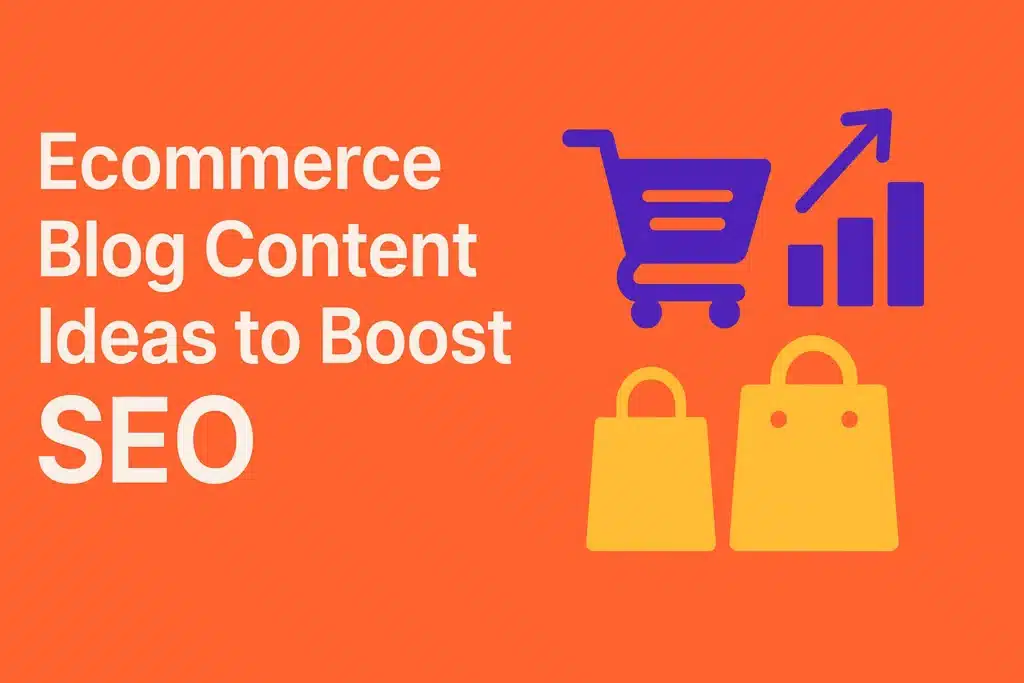Blogs assist online sellers connecting with people who research products online. This space allows you to publish tips, trends, and answers that address common buying choices. By adding fresh content, you encourage repeat visits and earn stronger brand awareness. Readers find trustworthy information that solves problems, which builds loyalty. Short guides, product comparisons, and behind-the-scenes stories can keep your audience interested. This steady approach supports organic ranking and invites browsers to explore other sections, such as category or product pages, building deeper engagement and eventually driving revenue.
By maintaining an active blog, you create more chances to showcase your unique value. Short-tail and long-tail keywords can be included into each piece to capture a broader share of searches. Potential buyers discover fresh reasons to trust your store, which can lead to more conversions. An upbeat, helpful tone also strengthens your overall image, moving skeptics toward making purchases. Buyers want to see authentic, informed voices online, so your blog’s role actively involves answering questions while updating them on market trends. This exchange strengthens relationships, prompting visitors to return. With a clear writing plan and consistent publishing routine, blogs become a key part of your ecommerce SEO strategy.
Why Does SEO Matter for E-Commerce
SEO brings online stores closer to potential customers by improving visibility. E-commerce websites often face strong rivals, making it important to stand out on search engines. High placement in search results drives clicks and raises brand interest. This method also lowers dependence on paid ads because organic traffic can yield more lasting results.
Customers often begin their shopping journeys by researching products. Appearing near the top of search results saves them time and improves trust in your brand. SEO also helps online stores manage site structure, which improves navigation and conversion rates. If main pages load fast and include the right keywords, users find products quickly.
Reviews and optimized content help shoppers gather useful info, increasing engagement. Clear category pages guide buyers, while product descriptions that highlight benefits can influence purchases. When SEO factors like mobile readiness are addressed, pages rank higher. Blog posts further educate and attract visitors who want answers to common questions.
SEO covers multiple elements, including technical setups and strategic content placement. E-commerce sites that focus on these areas improve user experiences and raise brand trust. The result is a long-term pipeline of interested traffic, which generates more consistent revenue. SEO forms the foundation of online success.
Role of Blog Content in Ecommerce SEO
Blogs support ecommerce SEO by providing fresh topics for search engines to index. Each new post increases ranking and delivers extra ways to connect with potential buyers. By including helpful tips and relevant keywords, blogs expand organic reach. This approach satisfies user intent and raises brand discovery and search interest.
How ecommerce blogs drive organic traffic
Ecommerce blogs increase exposure in search results. SEO affects ranking, and each blog post directly targets certain phrases. According to a study, marketers often measure success by organic traffic. This helps stores reduce ad spending and maintain revenue growth. Search engine optimization is low-hanging fruit for ecommerce businesses (BigCommerce). Blogs also improve site structure, which raises user satisfaction and boosts brand loyalty.
Why Google rewards relevant blog content
Google values blog posts that answer user queries without useless filler. Search algorithms favor fresh, helpful text that covers genuine problems. This approach boosts rankings because visitors remain interested. Relevant blog content also attracts inbound links, showing trust to search engines. Accurate, user-focused writing reflects expertise, which sets an online store apart from competitors in search results. It enhances overall ecommerce SEO standing.
Using blogs to support ecommerce keyword research
An ecommerce blog can answer buyers’ questions before they choose items. This helps your site rank for broader phrases. By covering info-based keywords, you draw research-focused visitors who may eventually purchase. Each helpful post builds trust, improves standing, and supports your ecommerce keyword research. Internal linking leads readers to category or product pages, driving sales and boosting ecommerce SEO reach.
Create Blog Content Around Ecommerce Keyword Research
Focus on phrases that attract prospective shoppers. Blogs that align with frequent searches introduce users to your products. By doing ecommerce keyword research, you find terms related to specific buying phases. Topics covering concerns or trends drive new visitors, while planned content positions improve direct exposure across search engines.
Use long-tail keywords relevant to buyer intent
Long-tail keywords match detailed user queries and frequently lead to higher conversion rates. These phrases reflect exact purchasing interests, which improves traffic quality. Long-tail keywords, while having lower search volumes, tend to have higher conversion rates due to accuracy (Neil Patel). Use these keywords in blog headlines and body text for focused engagement. Match with buyer intent to shorten the purchasing steps.
Rank blog ideas based on search volume and funnel stage
Studying search volume helps you pick topics with broader reach. The first three search results receive over 58% of the traffic (Shopify Blog). Assign higher priorities to keywords matching mid or bottom funnel needs. This approach targets interested buyers and raises potential conversions. Then schedule blogging efforts as needed. Focus on purchase-focused queries if your products solve problems or offer unique solutions.
Group related blog posts by product or category themes
Organize posts around product lines or connected categories to keep topics focused. Grouping content makes easier user browsing and helps search engines understand how pages relate (BigCommerce). Each cluster links to core pages, driving stronger ranking signals. This structure also boosts internal linking, guiding readers from broad topics to detailed posts. Such organization improves ecommerce SEO and fosters greater buyer engagement overall.
Develop Blog Topics That Improve Category Page Optimization
Blogs play a part in category page optimization by sending relevant traffic. Posts that explain specific collections guide users toward deeper site sections. Targeting broad or mid-level keywords directs readers seeking selected options. This setup raises exposure, encourages on-page interactions, and improves overall ecommerce SEO results with stronger purchasing confidence.
Link blog topics to specific category pages
Use clear anchor text to guide readers from blog posts to category pages. Category pages help you target broad, high-volume search terms (Neil Patel). Each link boosts search indicators and highlights relevant sections. This method raises user awareness of product groups and makes easier discovery. Consistent linking adds SEO value. It also keeps visitors on your site longer, which can increase sales.
Use FAQ-style posts to support internal linking
FAQ-style posts address common queries, creating natural linking paths to key pages. Readers see quick answers, then go to category or product listings. This approach boosts site structure because each question guides visitors deeper. Well structured FAQs also signal thorough coverage. That coverage supports ecommerce SEO by connecting relevant content across the site. FAQ sections encourage buyers to look at further.
Build supporting content for cornerstone category pages
Cornerstone content targets broad search terms and anchors high-level categories. Supporting posts link back to these cornerstone sections, which target tough keywords. Each related article covers subtopics, such as niche product types or usage tips, and directs readers to category pages. This stacked structure increases exposure. It also strengthens internal linking, since multiple articles funnel standing to key ecommerce pages. This method supports better ecommerce SEO.
Conclusion
Ecommerce SEO benefits from strategic blog content that connects to relevant category pages and product listings. By focusing on essential keywords and user questions, you attract interested shoppers who are seeking specific solutions. Long-tail phrases align with buyer intent, which often leads to stronger conversions. Often refreshing your blog keeps content fresh and maintains user interest. Each internal link creates a route for standing to flow throughout your site. This approach promotes higher positions in search results and more consistent traffic over time. With these steps, ecommerce brands can strengthen an online presence that remains visible and competitive in placements.
FAQs
Use these frequently asked questions to improve your ecommerce SEO improvement strategy. They address common daily questions about blogging and optimization.



